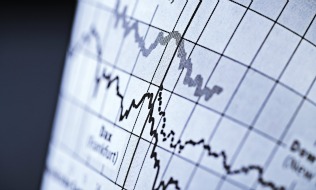

The New Year is often greeted with enthusiasm and optimism. Not so 2016, which appears to be more of the same – volatile equity markets, a declining Canadian dollar, declining oil prices and lower interest rates. As a consumer, some of these might bring some cheer, but as a saver and investor, equity volatility and lower interest rates continue to be problematic.
The prospects for the Canadian economy, in the near term, are muted at best. The International Monetary Fund (IMF) has recently downgraded its forecast for Canada, citing China’s slower growth, plunging oil prices and the declining Canadian dollar versus the U.S. dollar.
The low oil price is the result of excess production and decreasing demand globally, but especially from the emerging economies that are struggling to right themselves. This is quite different than the global financial crisis in 2008, when the declining oil price was a financial event and the oil price recovered quickly. The supply/demand imbalance will likely be further exacerbated now that Iran is able to begin production again, placing downward pressure on the oil price or at least delaying its recovery.
While many of the emerging economies are experiencing slower growth or even recession (e.g. Brazil), it is the slowing growth in China that has caused investors the most concern. Policymakers appear to have been caught off guard by the speed at which Chinese growth is slowing. China is already an important driver of global economic growth and asset returns, and will become more so as it opens up its financial system. Chinese policymakers are motivated to manage the transition to a more open economy as smoothly as they can. However, the policy challenges of reforming and liberalizing a slowing economy are acute and the risk of a policy error is elevated.
Policymakers in other developed nations are similarly struggling. The European Central bank continues to maintain a policy of quantitative easing, which is broadly supportive of European equities in local currency terms. European economic activity remains mixed, with even Germany feeling the impact of global uncertainty. While the U.S. economy is still expected to be one of the strongest – despite recent comments by the IMF about lower growth prospects – uncertainty remains about the timing and extent of the Federal Reserve Open Market Committee’s interest rate increases. Of equal concern to investors is the level of the U.S. dollar. It is likely that the U.S. dollar will remain strong against the Euro, Yen and the Canadian dollar, and could even strengthen, albeit at a slower pace.
This naturally brings us back to Canada. The Bank of Canada is in a difficult position with interest rates being as low as they are. Monetary policy cannot help Canada get out of its growth funk, which is why the federal government is exploring accelerating its infrastructure programs, even at the expense of increasing the deficit beyond the telegraphed $10 billion.
During the election campaign, Justin Trudeau promised an additional $60 billion for infrastructure projects over the next 10 years, but only $17.4 billion of this was expected to be spent in the first four years. With a slumping economy, pressure is mounting to explore both refurbishment and new asset programs, some of which could be implemented quickly. Infrastructure spending has been forecast to add between 0.3% to 0.5% annually to economic growth, as more jobs are created and other multiplier effects felt. Former oil patch workers with the requisite skills could be tapped for at least some of the jobs that would be created.
It is fair to say that pension plan sponsors and individual investors have a difficult task ahead of them in determining how best to position their portfolios. At least in the near term, it is unlikely that equity market returns and interest rate increases will be sufficient to alleviate the pressures they face. Unfortunately, saving more is one of the outcomes of this environment. As winter abates, and the prospect for spring looms, perhaps with it will come some welcome news in what has been a dismal start to 2016.
